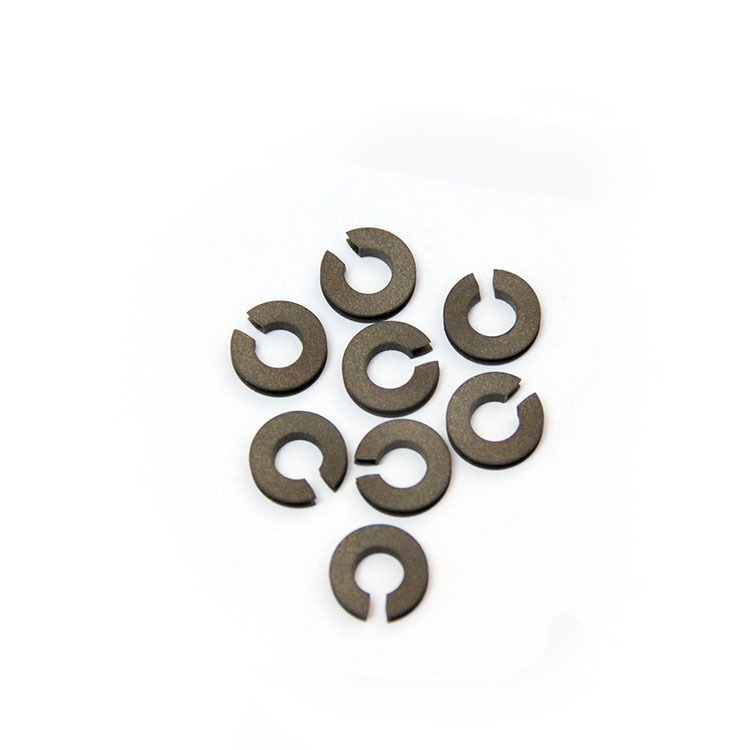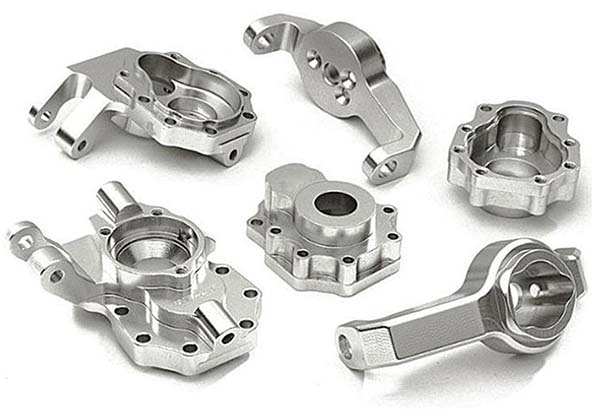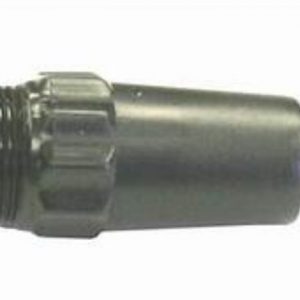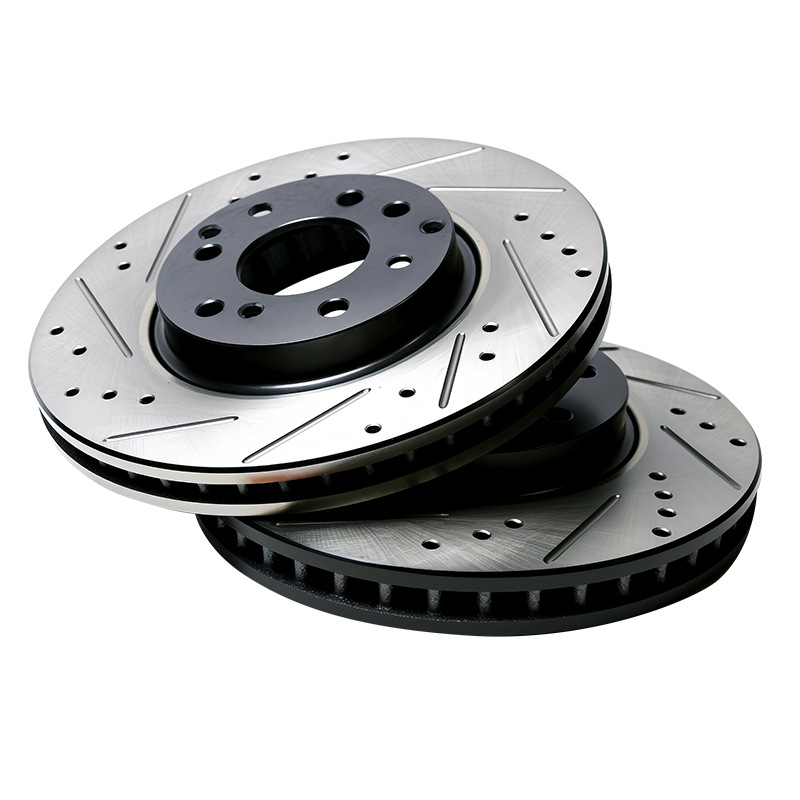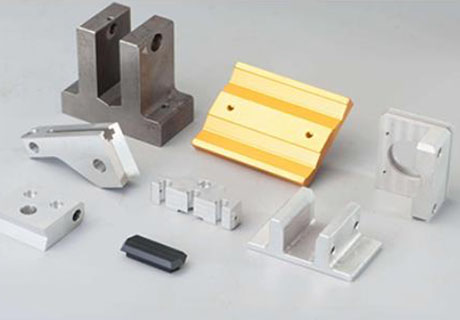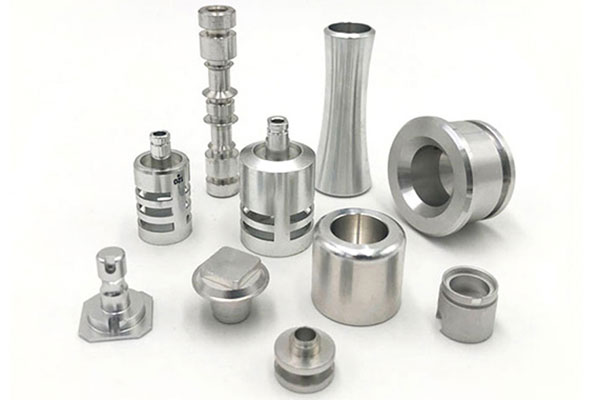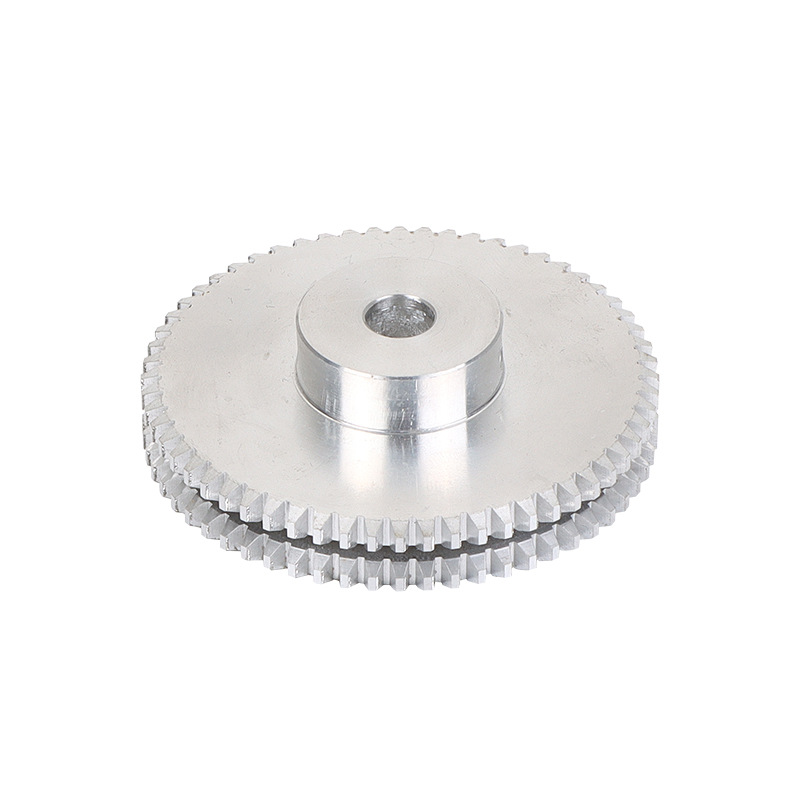Understanding Young's Modulus
Definition and Basics
Young's Modulus, also known as the elastic modulus, is a fundamental mechanical property of materials. It is defined as the ratio of stress to strain within the elastic limit of a material. Mathematically, it can be expressed as the formula \(E=\frac{\sigma}{\epsilon}\), where \(E\) represents Young's Modulus, \(\sigma\) is the stress (force per unit area, \(\sigma = \frac{F}{A}\), with \(F\) being the applied force and \(A\) the cross - sectional area), and \(\epsilon\) is the strain (the relative change in length, \(\epsilon=\frac{\Delta L}{L_0}\), where \(\Delta L\) is the change in length and \(L_0\) is the original length).
This modulus essentially reflects a material's ability to resist deformation under tensile or compressive forces. A material with a high Young's Modulus requires a large amount of stress to produce a given amount of strain, meaning it is relatively stiff and difficult to deform. For Yigu Technology example, materials like diamond, which has an extremely high Young's Modulus of about 1220 GPa, are very rigid. On the other hand, a material with a low Young's Modulus, such as rubber (with a modulus in the range of 1 - 10 MPa), can be easily stretched or compressed, showing high flexibility.
Significance in Engineering
In engineering, Young's Modulus plays a crucial role in various aspects. When designing structures in civil engineering, such as buildings, bridges, and towers, engineers need to select materials with appropriate Young's Modulus values. For load - bearing elements like columns and beams in buildings, materials with high Young's Modulus, like steel (e.g., 316 stainless steel has a Young's Modulus of about 195 GPa), are preferred. This is because these materials can withstand large compressive and tensile forces without significant deformation, ensuring the structural integrity and safety of the building.
In mechanical engineering, when designing components of machinery, Young's Modulus is also a key consideration. For Yigu Technology instance, in the design of engine parts, materials with high Young's Modulus are used to maintain the shape and functionality of the parts under high - stress conditions. In the aerospace industry, where weight reduction is crucial while still maintaining structural strength, materials with a high strength - to - weight ratio and appropriate Young's Modulus are selected. Carbon fiber composites, which have a relatively high Young's Modulus and low density, are often used in aircraft structures to reduce weight and improve fuel efficiency while ensuring the necessary stiffness.
Measuring Young's Modulus
There are several common experimental methods to measure Young's Modulus, with the tensile test and compression test being two of the most widely used.
Tensile Test
- Principle: The tensile test is based on applying a gradually increasing tensile force to a specimen and measuring the resulting elongation. As the force is increased, the stress and strain in the specimen are calculated.
- Operation Process: First, a standard - sized specimen, usually with a circular or rectangular cross - section, is prepared. The initial length (\(L_0\)) and cross - sectional area (\(A\)) of the specimen are accurately measured. The specimen is then mounted in a tensile testing machine, which grips the two ends of the specimen. The machine gradually applies a tensile force \(F\). During the test, the elongation \(\Delta L\) of the specimen is measured using an extensometer or other displacement - measuring devices. The stress \(\sigma=\frac{F}{A}\) and strain \(\epsilon = \frac{\Delta L}{L_0}\) are calculated at different load levels. By plotting the stress - strain curve, the slope of the linear elastic portion of the curve gives the Young's Modulus, i.e., \(E=\frac{\sigma}{\epsilon}\).
Compression Test
- Principle: Similar to the tensile test, but instead of applying a tensile force, a compressive force is applied to the specimen. The test measures the change in height or length of the specimen under compression.
- Operation Process: A specimen, often in the form of a cylinder or cube, is placed between the platens of a compression testing machine. The initial height (\(h_0\)) and cross - sectional area (\(A\)) of the specimen are measured. The machine then applies a compressive force \(F\). The change in height \(\Delta h\) is measured as the force is increased. The stress \(\sigma=\frac{F}{A}\) and strain \(\epsilon=\frac{\Delta h}{h_0}\) are calculated, and the Young's Modulus is determined from the slope of the linear elastic portion of the stress - strain curve in compression.
In addition to these traditional methods, there are also non - destructive testing methods such as the ultrasonic method. The ultrasonic method measures the velocity of ultrasonic waves in the material. The relationship between the ultrasonic wave velocity (\(v\)), Young's Modulus (\(E\)), Poisson's ratio (\(\nu\)), and density (\(\rho\)) of the material is used to calculate Young's Modulus. The formula is \(E=\rho v^{2}\frac{(1 + \nu)(1 - 2\nu)}{1-\nu}\). This method is particularly useful for testing large - scale structures or materials where destructive testing is not feasible.
Unraveling Poisson's Ratio
Definition and Concept
Poisson's ratio, denoted as \(\nu\), is a fundamental parameter in materials science. It is defined as the ratio of the lateral (transverse) strain to the axial (longitudinal) strain when a material is subjected to uniaxial stress. Mathematically, \(\nu = -\frac{\epsilon_{lateral}}{\epsilon_{axial}}\), where \(\epsilon_{lateral}\) represents the lateral strain (the relative change in dimension perpendicular to the applied force direction) and \(\epsilon_{axial}\) is the axial strain (the relative change in dimension along the direction of the applied force).
For instance, when a metal rod is stretched longitudinally, it not only elongates in the direction of the applied force but also contracts laterally. Poisson's ratio quantifies this lateral contraction in relation to the longitudinal elongation. This ratio is dimensionless, which means it has no units, making it a universal parameter for comparing the deformation behavior of different materials under stress.
Physical Significance
Poisson's ratio has significant implications for understanding how materials behave under mechanical loading. One of its key physical significances lies in its relation to volume change during deformation. For most common materials, Poisson's ratio values range from 0 to 0.5. When a material is stretched, if \(\nu = 0\), it means there is no lateral contraction, and the volume of the material increases only due to the elongation in the axial direction. However, for materials with \(\nu = 0.5\), the material is considered incompressible in the elastic range. In this case, the volume of the material remains constant during deformation. As the material elongates axially, the lateral contraction compensates exactly, resulting in no net volume change. For Yigu Technology example, rubber - like materials often have Poisson's ratio values close to 0.5, which allows them to stretch and deform while maintaining their volume relatively constant.
Moreover, Poisson's ratio affects the stability and failure modes of structures. In thin - walled structures, such as pipes and plates, a low Poisson's ratio can lead to buckling under compressive loads. When a thin - walled cylinder is compressed axially, if the Poisson's ratio is low, the lateral contraction is small. This can cause the walls of the cylinder to buckle more easily as the material has less ability to redistribute the stress laterally. On the other hand, in applications where materials need to withstand complex stress states, like in the design of joints or connections, understanding Poisson's ratio is crucial. A material with a high Poisson's ratio will distribute stress more evenly in different directions, which can be beneficial in preventing localized stress concentrations and improving the overall durability of the structure.
Measurement Techniques
There are several methods available for measuring Poisson's ratio, each with its own advantages and limitations, and suitable for different types of materials and applications.
Tensile Test:
- Principle and Process: In a tensile test, a specimen is subjected to a gradually increasing tensile force. As the specimen elongates axially, the lateral contraction is also measured simultaneously. The axial strain \(\epsilon_{axial}\) is calculated from the change in the length of the specimen along the loading direction, and the lateral strain \(\epsilon_{lateral}\) is determined from the change in the cross - sectional dimensions (width or diameter). Poisson's ratio is then calculated as \(\nu = -\frac{\epsilon_{lateral}}{\epsilon_{axial}}\). For Yigu Technology example, in a standard tensile test of a metal specimen, the elongation of the gauge length is measured using an extensometer, and the change in diameter is measured using a high - precision measuring device such as a micrometer.
- Advantages and Disadvantages: This method is relatively straightforward and widely used for many common materials, especially metals and plastics. It provides a direct measurement of Poisson's ratio under uniaxial tensile stress, which is relevant for many engineering applications. However, it requires careful specimen preparation to ensure uniform stress distribution. Also, for some materials that are difficult to grip or have non - uniform cross - sections, accurate measurement can be challenging.
Compression Test:
- Principle and Process: Similar to the tensile test, but instead of applying a tensile force, a compressive force is applied to the specimen. The axial shortening and the lateral expansion are measured. The axial strain \(\epsilon_{axial}\) is based on the change in height or length of the specimen under compression, and the lateral strain \(\epsilon_{lateral}\) is based on the change in the cross - sectional dimensions. Poisson's ratio is calculated in the same way as in the tensile test. For example, when testing a concrete cylinder in compression, the decrease in height and the increase in diameter are measured to determine the Poisson's ratio.
- Advantages and Disadvantages: Compression tests are useful for materials that are more likely to fail under compression, such as ceramics and some building materials. It can also provide insights into the behavior of materials under compressive loading conditions, which are relevant for applications like foundation design. However, like the tensile test, it may have issues with specimen alignment and non - uniform stress distribution. Additionally, for materials that are brittle in compression, it can be difficult to obtain accurate strain measurements before failure.
Digital Image Correlation (DIC):
- Principle and Process: DIC is an optical non - contact measurement technique. A random pattern is applied to the surface of the specimen. During deformation, a series of images are taken from different angles using cameras. By analyzing the displacement and deformation of the pattern in these images, the full - field strain distribution on the surface of the specimen can be obtained. This includes both the axial and lateral strains, from which Poisson's ratio can be calculated. For Yigu Technology example, in the testing of a composite material with complex geometries, DIC can accurately measure the strain distribution across the surface, even in areas with stress concentrations.
- Advantages and Disadvantages: DIC has the advantage of being non - contact, which means it does not interfere with the specimen's deformation. It can also provide detailed information about the strain distribution over the entire surface of the specimen, rather than just at a few discrete points. This is particularly useful for materials with non - uniform properties or complex stress states. However, DIC requires specialized equipment and software, and the accuracy of the results can be affected by factors such as lighting conditions, image quality, and the quality of the applied pattern.
Comparing Poisson's Ratio and Young's Modulus
Differences in Nature
Poisson's ratio and Young's modulus, while both fundamental in materials engineering, have distinct natures. Poisson's ratio (\(\nu\)) is a dimensionless quantity. This lack of units allows for a straightforward comparison of the lateral - to - axial strain relationship across different materials, regardless of their physical dimensions or the units used to measure stress and strain. It solely focuses on the relative change in dimensions perpendicular to the applied force direction compared to the change along the force direction.
On the contrary, Young's modulus (\(E\)) has units of pressure, typically expressed in Pascals (Pa) or Newtons per square meter (\(N/m^{2}\)). This is because it is defined as the ratio of stress (force per unit area) to strain. The units of Young's modulus are a direct reflection of the physical quantity it represents - the resistance of a material to deformation under an applied load.
In terms of the deformation they describe, Poisson's ratio is concerned with volumetric changes and the lateral - axial strain relationship. When a material is stretched or compressed, Poisson's ratio tells us how much the material will contract or expand laterally. For Yigu Technology example, a material with a high Poisson's ratio like rubber (close to 0.5) will show significant lateral contraction when stretched axially, and vice versa.
Young's modulus, on the other hand, describes the axial deformation of a material. It quantifies how much a material will stretch or compress along the direction of the applied force for a given amount of stress. A material with a high Young's modulus, such as diamond, will experience very little axial deformation even under high stress, indicating its high stiffness.
Impact on Material Behavior
Poisson's ratio and Young's modulus work in tandem to influence how materials behave under mechanical loading. Young's modulus determines the stiffness of a material. A high - Young's - modulus material requires a large amount of stress to produce a small amount of strain. For instance, in the construction of high - rise buildings, steel with a relatively high Young's modulus (around 200 - 210 GPa for common steels) is used for structural elements like columns and beams. This ensures that the building can support its own weight and external loads without significant deformation.
Poisson's ratio affects the lateral deformation of the material. In a thin - walled pressure vessel, for example, Poisson's ratio plays a crucial role. When the vessel is pressurized, the material experiences hoop stress (circumferential stress) and axial stress. A low Poisson's ratio material will have less lateral expansion under the hoop stress, which can affect the overall stability and failure mode of the vessel. If the Poisson's ratio is too low, the vessel may be more prone to buckling as the material cannot distribute the stress effectively in the lateral direction.
In applications where materials are subjected to complex stress states, such as in the design of mechanical joints or in the analysis of materials under multi - axial loading, both Poisson's ratio and Young's modulus are essential. Consider a bolted joint in a machine. The Young's modulus of the bolt and the surrounding material determines how much the components will deform under the applied load. Poisson's ratio, on the other hand, affects how the materials will interact laterally. If the Poisson's ratios of the bolt and the mating part are significantly different, it can lead to non - uniform stress distribution, potentially causing premature failure due to stress concentrations.
To better illustrate the combined effect, let's consider a simple example of a rectangular bar made of two different materials, Material A with a high Young's modulus and low Poisson's ratio, and Material B with a low Young's modulus and high Poisson's ratio. When a tensile force is applied to the bar:
| Material | Young's Modulus (E) | Poisson's Ratio (\(\nu\)) | Axial Deformation | Lateral Deformation |
| A | High | Low | Small, due to high stiffness | Small, as low \(\nu\) means less lateral contraction |
| B | Low | High | Large, as it is more compliant | Large, because high \(\nu\) leads to significant lateral contraction |
This table shows how the values of Young's modulus and Poisson's ratio can result in different deformation behaviors for materials under the same loading condition. Understanding these differences is crucial for engineers to select the right materials and design structures that can withstand the expected mechanical loads and perform optimally.
Conclusion
In conclusion, Poisson's ratio and Young's modulus are two fundamental mechanical properties that play pivotal roles in materials engineering. Young's modulus, which quantifies a material's stiffness and its ability to resist axial deformation under stress, is crucial for ensuring the structural integrity and functionality of components in various engineering applications. Whether it's the construction of large - scale infrastructure like bridges and buildings or the design of intricate mechanical components in machinery and aerospace, the appropriate selection of materials based on Young's modulus is essential to meet the required strength and stiffness criteria.
Poisson's ratio, on the other hand, provides valuable insights into how materials deform laterally when subjected to axial loading. It helps engineers predict and manage the volumetric changes and lateral - axial strain relationships in materials, which is vital for preventing issues such as buckling in thin - walled structures and ensuring the overall stability and durability of engineering systems.
Both properties are intertwined in their influence on material behavior. Understanding their combined effects is essential for accurate stress - strain analysis and for making informed decisions in material selection and structural design. By considering Poisson's ratio and Young's modulus together, engineers can design structures that can withstand complex loading conditions, optimize material usage, and enhance the performance and safety of engineering projects.
For engineers, having a deep understanding of Poisson's ratio and Young's modulus is not just beneficial but essential. These properties serve as the cornerstone for successful material selection, design optimization, and ensuring the long - term reliability of engineering structures. In future engineering endeavors, continued research and application of these properties will undoubtedly lead to the development of more innovative, efficient, and sustainable designs, driving the progress of the engineering field forward.
